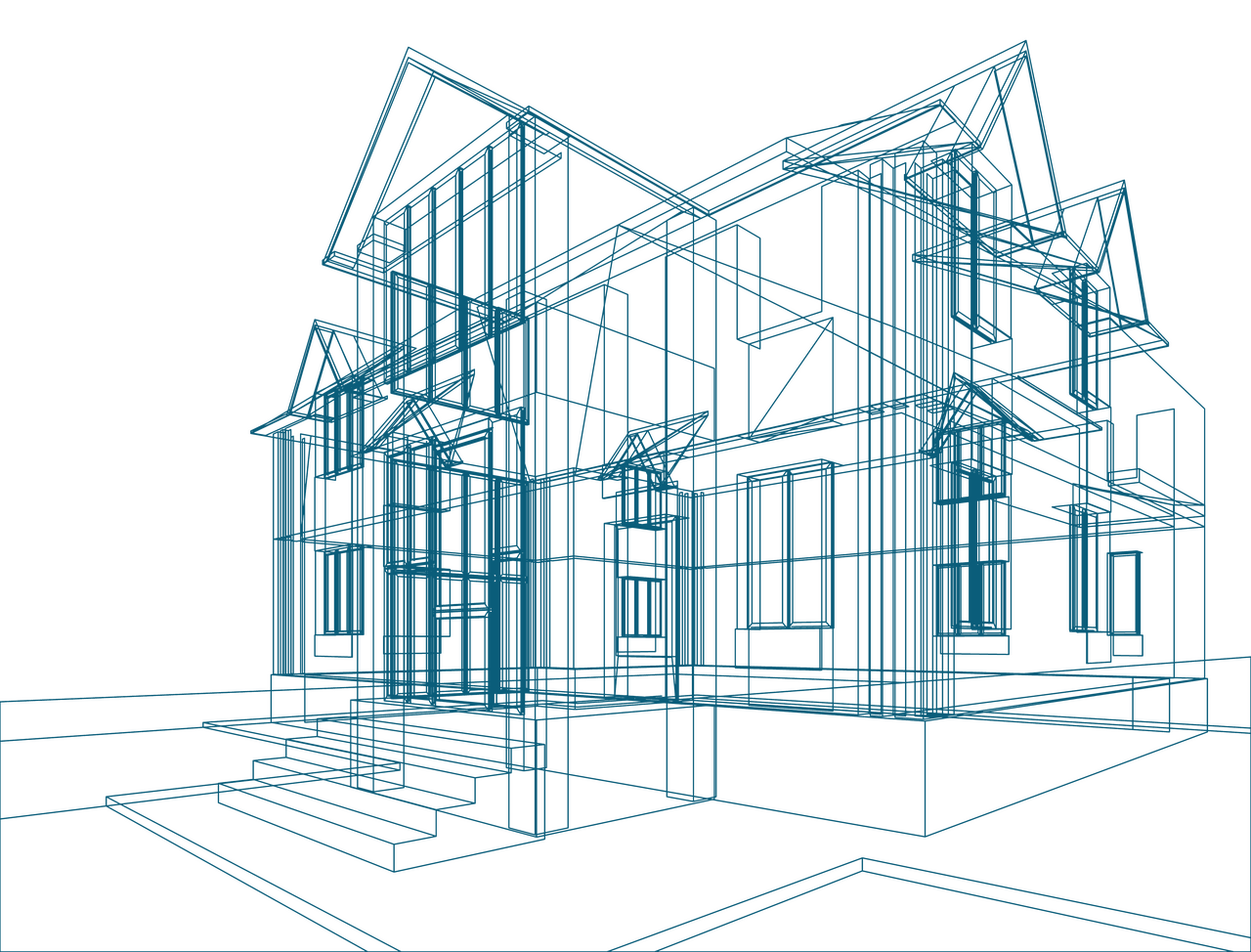


Fallstudie

Europäisches Architekturbewertungsbarometer
Es gibt einen Grund, warum ich mit dem Fachkräftemangel beginnen möchte. Der Fachkräftemangel, sowohl qualitativ als auch quantitativ, ist ein großes Problem (oder eine Chance) für die Bauindustrie in Europa...
Blogs I published 15 November 2023 I Dirk Hoogenboom
TOP 5 Trends, die die Zukunft der Bauindustrie gestalten
Seit vielen Jahren verfolgt die USP Marketing Consultancy (eine spezialisierte Marktforschungsagentur für die Bau- und Installationssektoren) die wichtigsten Trends in der Bauindustrie.
Heute möchte ich die fünf wichtigsten Trends vorstellen, von denen wir glauben, dass sie die Branche verändern werden. Mit „verändern“ meinen wir eine schrittweise und langsame Evolution. In der recht konservativen Bauindustrie geschehen Veränderungen nicht über Nacht.
Fachkräftemangel: ein unterschätztes Problem, das bleibt
Es gibt einen Grund, warum ich mit dem Fachkräftemangel beginnen möchte. Der Fachkräftemangel, sowohl qualitativ als auch quantitativ, ist ein großes Problem (oder eine Chance) für die Bauindustrie in Europa. Manchmal habe ich das Gefühl, dass die Schwere des Problems und seine Auswirkungen auf die breitere Branche oft unterschätzt werden. Zugegeben, die Intensität des Problems hängt stark von den jeweiligen Ländern ab.
Ein Fachkräftemangel beeinträchtigt bereits die Märkte in Ländern wie den Niederlanden und Deutschland, während die Probleme in Italien und Spanien weit weniger gravierend sind. Zum Beispiel geben 64 % aller Architekten in den Niederlanden an, dass der Fachkräftemangel die Ausführung von Projekten behindert. In Italien sind es nur 24 %. Ähnliches lässt sich auch bei allgemeinen Bauunternehmern feststellen: 64 % in den Niederlanden halten den Fachkräftemangel für ein ernstes Problem, im Vergleich zu 18 % der italienischen Bauunternehmer.
Generell sind die produktiven Stunden in der Bauindustrie nicht so stark gestiegen wie in anderen Branchen. Zudem hat die Bauindustrie für die jüngere Generation eine geringe Anziehungskraft und sieht sich einem hohen Abfluss von erfahrenen älteren Arbeitnehmern gegenüber.
Mit diesem hohen Abfluss an erfahrenen älteren Arbeitskräften und einem begrenzten Zustrom von jüngeren, unerfahrenen Arbeitnehmern steht die Branche vor sowohl quantitativen als auch qualitativen Fachkräftemängeln, die meiner Meinung nach nicht so bald gelöst werden.
Der Fachkräftemangel wird die Branche beeinflussen, da die Nachfrage weiterhin relativ hoch ist, wir vor enormen Herausforderungen stehen, die bestehenden Gebäude nachhaltiger zu gestalten (und somit noch mehr Arbeit zu schaffen), und Gebäude sowie Installationen immer komplizierter werden. Direkte Lösungen (die Gesamtzahl der Beschäftigten in der Bauindustrie zu erhöhen) sind kurzfristig schwer zu erreichen.
Nicht alles ist negativ, da der Fachkräftemangel auch Chancen für diejenigen schaffen wird, die in der Lage sind, Fertiglösungen, Wissen und Produkte/Dienstleistungen anzubieten, die die Produktivitätsniveaus erhöhen.
Prefab: prefab will still grow in importance, but the full potential is still not unlocked
As a natural consequence of the labour shortages (but that’s not the only driver), the construction process needs to become more efficient, and prefabrication is one way of doing this. In the European construction market, prefabrication solutions have been used for many years.
If we look at the current usage of prefab solutions (panelized systems, panelized systems with finishing, and 3D prefab/volumetrics), it’s already at a high level. There are, however, significant country differences. For example, Dutch architects report that 60% of all of their projects contain some form of prefab. In all other countries, the percentage of projects containing some form of prefab is significantly lower (on average around 30%).
Also from a contractor’s perspective, prefab is most often applied in the Netherlands. In 71% of all projects, some form of prefab was applied, according to Dutch contractors (mid to large size). It’s also on a high level in Belgium, Germany, Poland and Italy (close to 50%).
So why is prefab not already solving the labour shortage problem? Well, most of the prefab applied is ‘simpler forms’ like panelized systems. On a European level, prefabricated plain unfinished elements (24%) and prefabricated plain finished elements (16%) are applied far more than volumetrics (3%). Furthermore, in many cases, its off-site production still relies on qualified construction workers. Also, the on-site usage of prefab still is relying too much on qualified staff. If we look at prefab production in a production line way (just like Henry Ford used to revolutionize the automotive industry) the volumes are very low. This segment is growing, but slowly.
Looking at the future, both architects and contractors alike foresee strong growth for prefab. However, it will mostly be the simpler forms of prefab. In order for prefab to really solve the labour shortage issues and increase productivity levels, the prefab industry will need to make use of lower-skilled workers in an assembly line way of working. Until this happens, prefab will still grow in importance, but its full potential will not be unlocked.
Digitalization and BIM: The adoption rate is increasing, but mostly only amongst architects
For many decades, the design process in the construction industry remained heavily reliant on paper. New digital ways of designing increased the quality of the designs and opened up the way for more complicated designs. CAT software changed the industry, but this change was relatively slow and didn’t tap into the huge potential digitalization of the construction industry could offer.
With the development of BIM (building information modelling), much more is possible. Even in more complicated designs, more parties can be involved, and the design process can be coupled with costs, planning, and many other elements. And last but not least, failure costs (which are relatively high in the construction industry) can be significantly reduced.
So where do we stand at the moment in terms of BIM adoption in Europe?
Well, like with all things in the construction industry, the development was slow at first. In 2019, only 10% of all European architects were BIM users. This grew slowly over time to 15% in 2011 and 19% in 2013. The adoption rate has been increasing, as in 2021 the percentage of European architects using BIM increased to 44%. In the future, European architects think that the percentage of BIM users will increase to 61% in 2025.
There are, however, significant country differences. In the Netherlands, almost 80% of all architects are BIM users. It’s the lowest in Italy, with only 22% of all Italian architects using BIM.
When it comes to BIM adoption among target groups further down the business value chain, it’s significantly lower. For example, amongst European contractors, the BIM adoption rate is only 42% in the Netherlands, 21% in the UK and below 6% in all other countries (2021 data). Amongst HVAC installers the percentage of BIM users is even lower, only 9% of all European HVAC installers are BIM users. So it’s clear that architects are driving BIM adoption, and we can already say that BIM usage is fairly common. Contractors follow this trend, as they are forced to work with BIM more often, but the adoption is still slow. Further down the business value chain, BIM usage is still in its infancy.
Looking towards the future, we expect BIM usage to continue to grow, especially as the software gets more intuitive, the cost of working in BIM drops, and the pressure to work in BIM continues to grow.

Read more

Frische Einblicke erwarten Sie
Unsere neuesten Berichte
Tauchen Sie ein in die neuesten Erkenntnisse aus verschiedenen Marktsegmenten, die Ihnen einen aktuellen Überblick bieten. Entdecken Sie unsere neuesten Berichte, vollgepackt mit aktuellen Daten, Trendanalysen und umfassenden Untersuchungen, die darauf abzielen, Ihnen ein umfassendes Verständnis der derzeitigen Marktdynamik zu vermitteln.
Bau
Heimwerkerbedarf
Installation
Sonderberichte
















